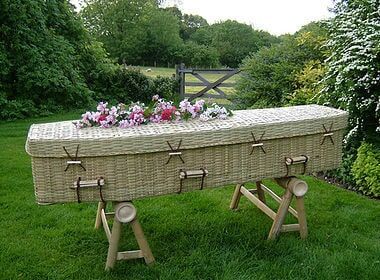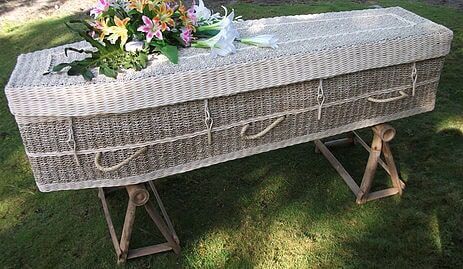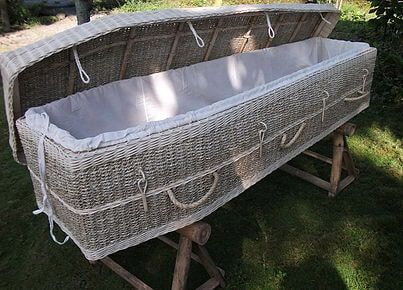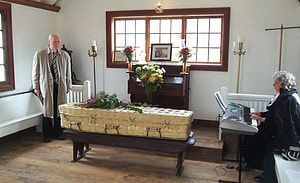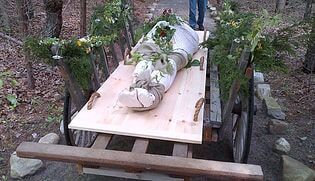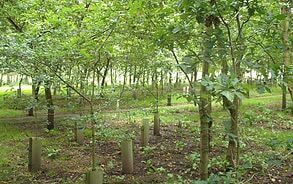GREEN BURIALS
Green Burials, PA
Green burial, also known as natural burial, is an environmentally-conscious alternative to traditional burial practices. It involves interring a body in a biodegradable casket or shroud, allowing the body to decompose naturally and return to the earth, minimizing the environmental impact associated with embalming chemicals and non-biodegradable materials commonly used in conventional burials.
Steelmantown Cemetery "Eternally Green"
Steelmantown Cemetery is about one hour from Morrisville, Pennsylvania. It has a natural beauty that will leave you in amazement.
Price List For Green Burial Caskets
Prices DO NOT Include Shipping
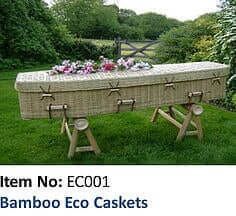
74" x 23" x 18" $1370
71" x 21" x 18" $1370
69" x 20" x 18" $1370
64" x 18" x 18" $1320
55" x 16" x 18" $565 (Child)
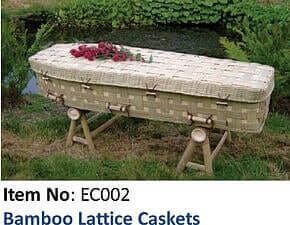
80" x 24" x 18" $1700
74" x 23" x 18" $1600
71" x 21" x 18" $1600
69" x 20" x 18" $1600
67" x 18" x 18" $1540
64" x 18" x 18" $1460
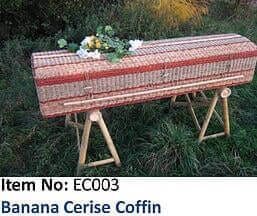
84" x 26" x 18" $1830
76" x 24" x 18" $1830
71" x 21" x 18" $1810
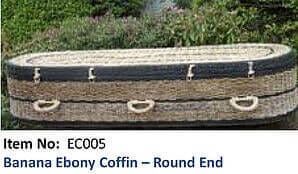
84" x 26" x 18" $1830
76" x 24" x 18" $1830
71" x 21" x 18" $1810
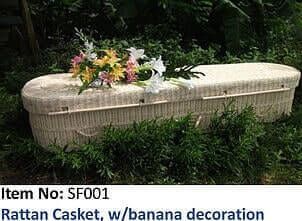
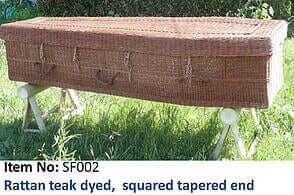
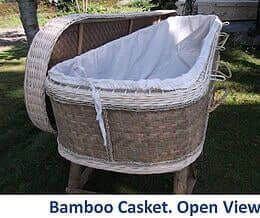
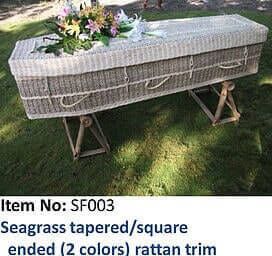
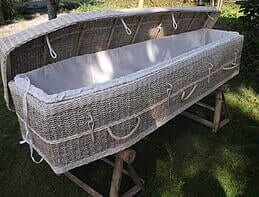
Seagrass tapered/square ended (2 colors) rattan trim - Open View
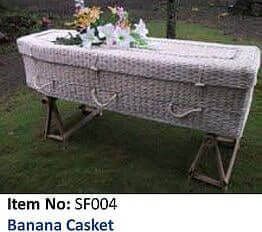
- Green burial with minimum casket $4,605.00
- Green burial with casket provided by purchaser $3,235.00
- Green burial with casket selected from our funeral home (in addition to cost of casket) $3,235.00
- Additional items that you, the family may request…
- Disinfect remains and set features for viewing $ 175.00
- Use of funeral home for private viewing $ 750.00
- Refrigeration $ 80/day
- Nursing home/residence removal $ 100.00
Direct burial casket ranges from $1,370 - $1,830 (prices do not include shipping – shipping can range between $100.00 and $200.00 for delivery in 4-5 days.
We recommend Steelmantown Cemetery in South Jersey as the nicest natural, embalming free green cemetery.
Frequent Questions
Click on the questions below to reveal each respective answer.
Need Assistance or Have Questions? Call Us Today, We Are Available 24/7 | 215-295-7725

